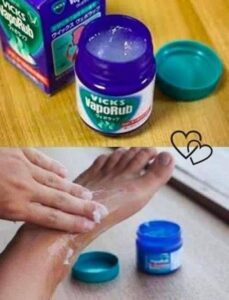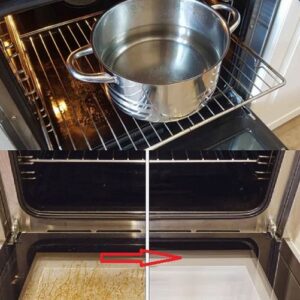INSECT REPELLENT: An Unconventional Solution with Vicks Vaporub
Amidst the warm embrace of summer, the outdoors beckon. Picnics, hikes, and evening strolls become the norm, but so do the unwelcome guests: mosquitoes and other pesky insects. The hunt for insect repellent is a common ritual, but what if we told you there’s an unconventional solution right in your medicine cabinet? Enter Vicks Vaporub, a versatile ointment known for its soothing properties in treating colds and congestion. Surprisingly, it also doubles as a remarkably effective insect repellent. In this article, we’ll explore this unexpected use of Vicks Vaporub and delve into why it works.
The Science Behind It
At first glance, the idea of using Vicks Vaporub as an insect repellent might seem far-fetched. However, it’s rooted in the unique combination of ingredients that make up this topical ointment. Key components like menthol, camphor, and eucalyptus oil contribute to its characteristic scent, which is not only pleasant to humans but also a powerful deterrent for mosquitoes and many other insects.
1. Menthol: A Natural Repellent
Menthol, a compound derived from peppermint oil, has long been recognized for its insect-repelling properties. Its strong, minty scent is overpowering to many insects, deterring them from landing on the skin. When applied, the scent of menthol creates an invisible barrier that discourages mosquitoes from getting too close.
2. Camphor: A Natural Insecticide

Camphor, another key component of Vicks Vaporub, has insecticidal properties. Its distinct scent and volatile nature make it an effective deterrent against mosquitoes, flies, and other insects. When released into the air, camphor disrupts an insect’s sensory receptors, making the area less appealing for them to inhabit.
3. Eucalyptus Oil: A Known Insect Repellent
Eucalyptus oil, a common ingredient in Vicks Vaporub, is a well-documented insect repellent. It contains compounds like cineole, which are known for their insecticidal properties. When applied to the skin, eucalyptus oil creates a protective barrier, deterring insects from making contact.
How to Use Vicks Vaporub as an Insect Repellent
Using Vicks Vaporub as an insect repellent is a simple process. Here’s a step-by-step guide:
Select the Right Formula:
Opt for the classic Vicks Vaporub ointment, as it contains the necessary ingredients for insect-repellent properties.
Apply Liberally:
Take a small amount of Vicks Vaporub and apply it to exposed areas of skin, such as arms, legs, and neck. Ensure that you cover all the areas you want to protect from insects.
Reapply as Needed:
The effectiveness of the repellent may diminish over time, especially if you’re sweating or in water. Reapply Vicks Vaporub as needed to maintain its insect-repelling properties.
Additional Considerations
While Vicks Vaporub is a surprisingly effective insect repellent, there are some important points to keep in mind:
Patch Test:
Before applying Vicks Vaporub to a larger area of skin, perform a patch test to check for any potential allergic reactions or skin sensitivities.
Avoid Contact with Eyes and Mucous Membranes:
Be careful to avoid getting Vicks Vaporub in your eyes or on sensitive areas like the mouth and nose.
Reapply as Needed:
The effectiveness of Vicks Vaporub as an insect repellent may vary depending on factors like humidity, sweat, and water exposure. Reapply as necessary to maintain its efficacy.
In conclusion, while Vicks Vaporub is primarily known for its therapeutic uses in treating colds and congestion, its unexpected role as an insect repellent is a testament to its versatility. The combination of menthol, camphor, and eucalyptus oil creates a natural and effective deterrent against mosquitoes and other pesky insects. So the next time you find yourself out of conventional insect repellent, don’t overlook the unassuming jar of Vicks Vaporub in your medicine cabinet. It just might be your ticket to a bug-free summer adventure.





